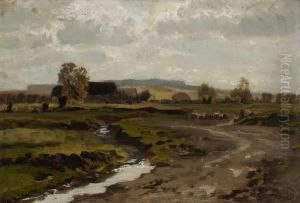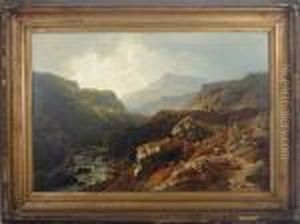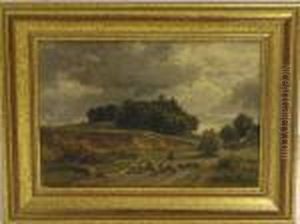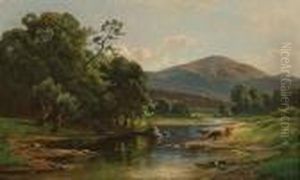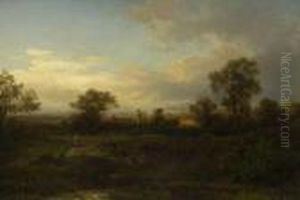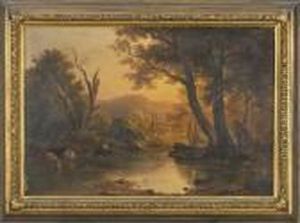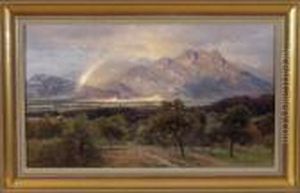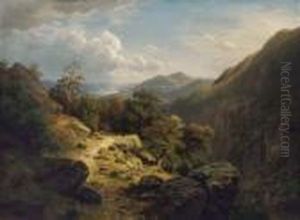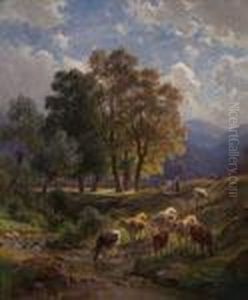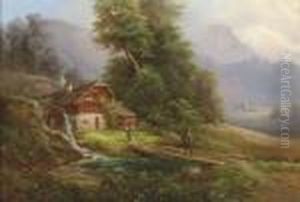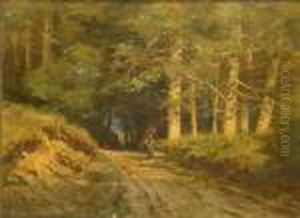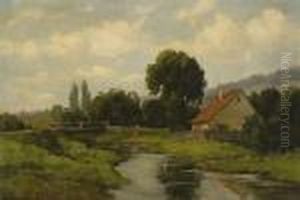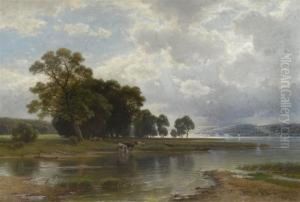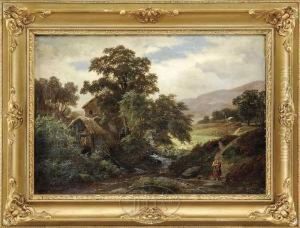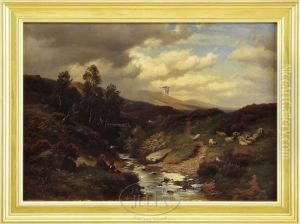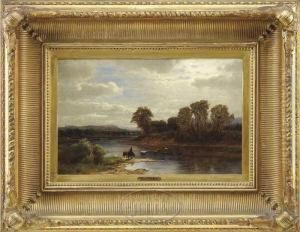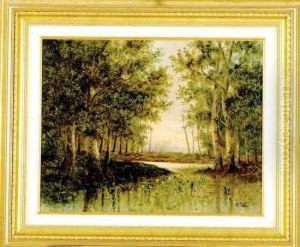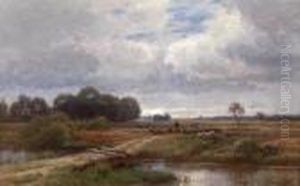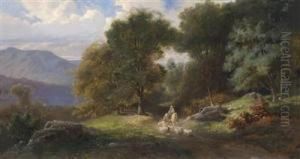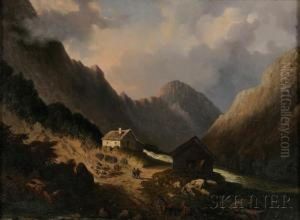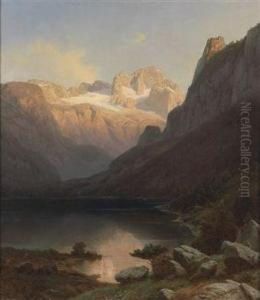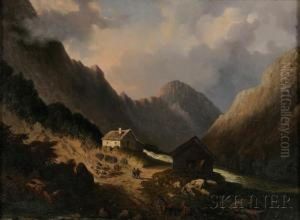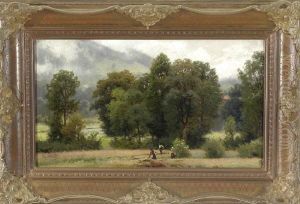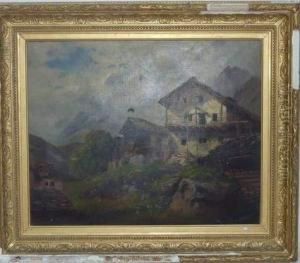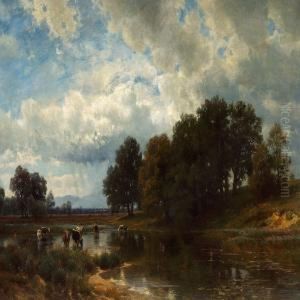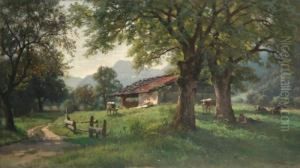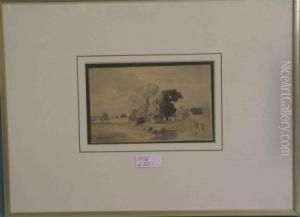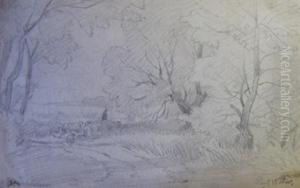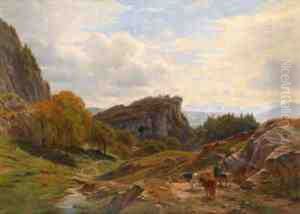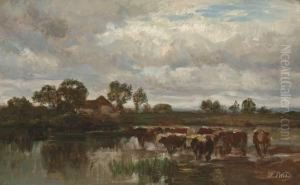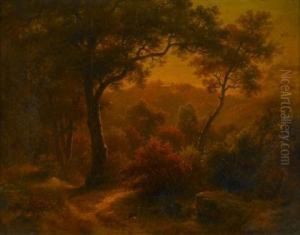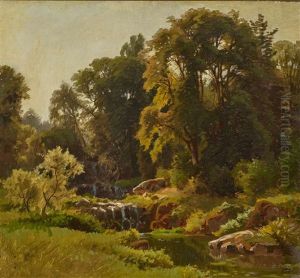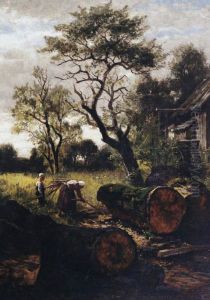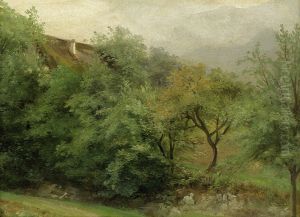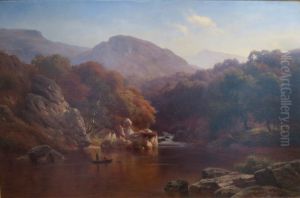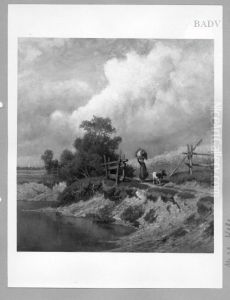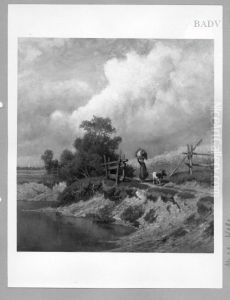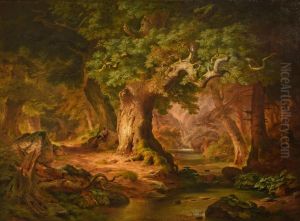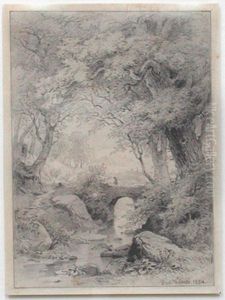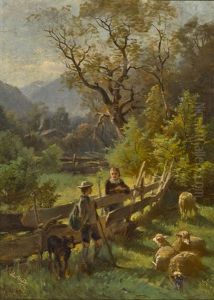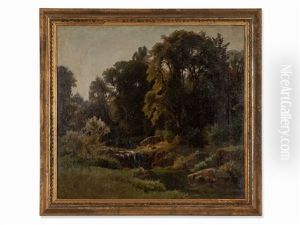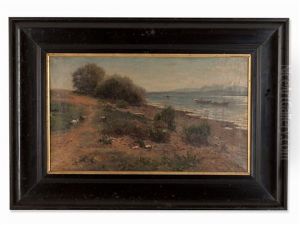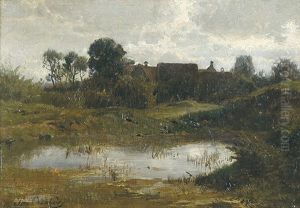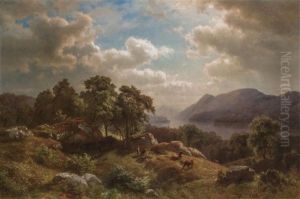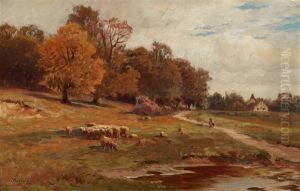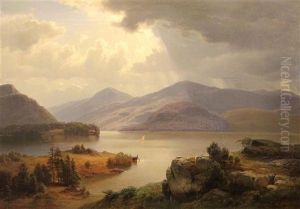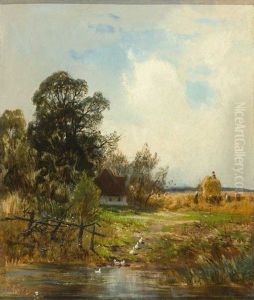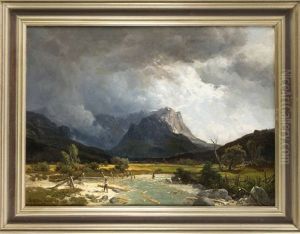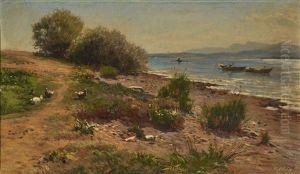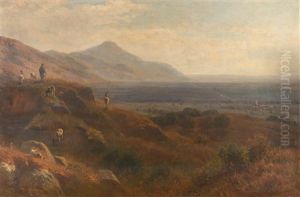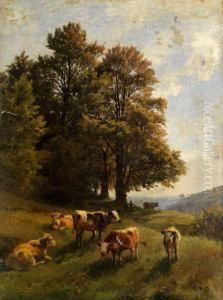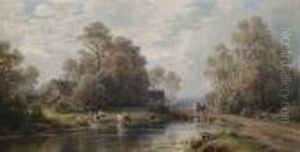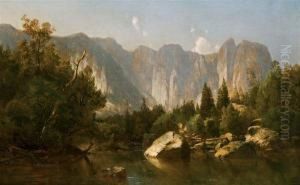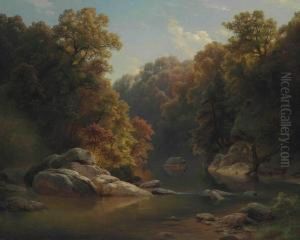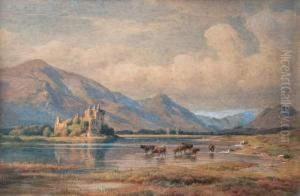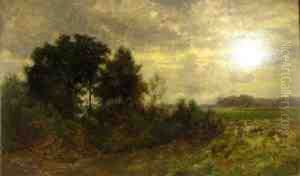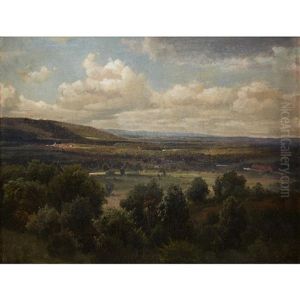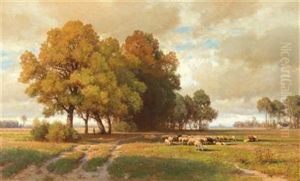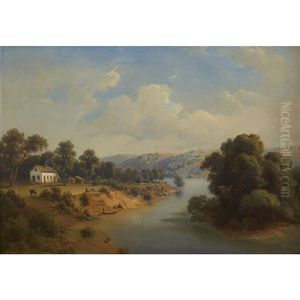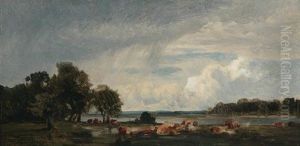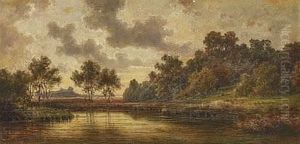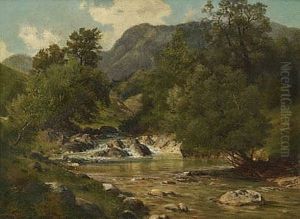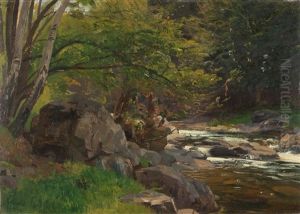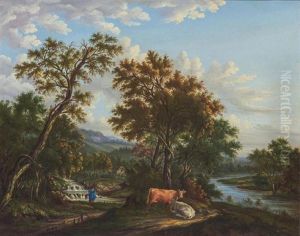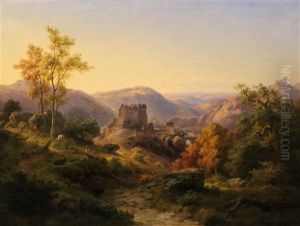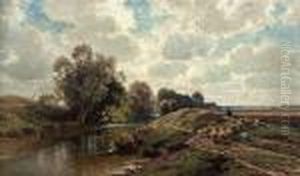Paul Weber Paintings
Paul Weber was a German-American landscape painter, known for his pastoral and idyllic representations of rural landscapes. Born on July 25, 1823, in Darmstadt, Germany, Weber developed an early interest in art and was influenced by the natural beauty of the German countryside.
In the early stages of his career, Weber studied painting in Frankfurt and Munich, and his work was initially influenced by the German Romantic landscape tradition. He was particularly inspired by the works of artists such as Carl Rottmann and Johann Wilhelm Schirmer. Weber's early paintings often depicted the German landscape in a romantic and picturesque manner, with a keen attention to naturalistic detail and a harmonious color palette.
Seeking broader horizons and new artistic opportunities, Weber emigrated to the United States in the late 1840s. He settled in Philadelphia, which at the time was a vibrant center for the arts in America. There, he became associated with the Hudson River School, a group of American painters known for their romantic landscapes that celebrated the natural beauty of the American wilderness. While he was not a formal member of this group, Weber's work shares its aesthetic principles and thematic concerns.
Throughout his career in the United States, Weber traveled extensively, capturing the diverse landscapes of America in his art. His paintings often depicted the untouched aspects of the American landscape, from the rugged mountains to the expansive plains. Weber's ability to portray the grandeur and vastness of the American landscape made him popular among art collectors and the general public.
Weber's work was widely exhibited during his lifetime, and he gained considerable recognition and success as a landscape artist. He participated in numerous exhibitions at the Pennsylvania Academy of the Fine Arts and also exhibited his work at the National Academy of Design in New York.
Paul Weber's artistic legacy is characterized by his mastery of landscape painting and his contribution to the portrayal of the American environment during the 19th century. His works are held in several prestigious collections, including the Philadelphia Museum of Art and the Smithsonian American Art Museum.
Weber continued to paint and exhibit his work until his later years. He passed away on April 12, 1916, in Philadelphia, leaving behind a rich body of work that continues to be appreciated for its artistic merit and historical value.
